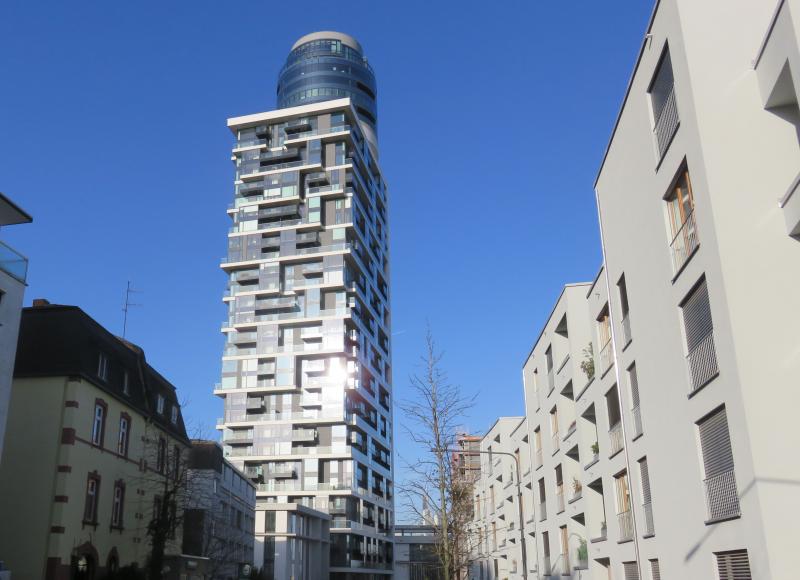New Scoring for Residential Locations with Strong Growth Prospects
New Scoring for Residential Locations with Strong Growth Prospects
Whether or not a property investment is fit for the future depends on many factors. One of them is how comfortable people are in it. In a survey of residential locations with a bright outlook (“Future Locations: Wohnlagen mit Perspektive”) that we conducted together with Wealthcap, we examined auspicious cities and micro-environments. A customised scoring evaluates macro- and micro-criteria simultaneously for the first time.
What makes a residential location attractive? It is the decisive question that ultimately everybody faces: residential tenants, condominium buyers, private landlords, public housing companies and not least institutional investors. In these times of low interest rates and bond yields, many investors are scrutinising the residential property market as an attractive investment objective because it usually permits stable rental yields in combination with relatively low risks.
The residential location scoring not only considered the macro-criteria that map the long-term viability of a city as a whole. To compile the Wealthcap Scoring, we combined these insights with micro-criteria that refer to a single city, a self-contained urban district or a neighbourhood for the first time. A special challenge in this context is how to select a sensible set of criteria on the micro-level because how people live varies from one target group and one milieu to the next. The survey applies a total of 19 indicators to investigate smaller population centres in addition to the German metropolises, meaning B-, C- and D-class cities.
These 19 scoring indicators for future-proof residential locations are split between the two survey areas of macro-environment (10 criteria) and micro-environment (9 criteria). Factors entering into the assessment of the macro-environment extend from classic economic aspects such as economic and innovative strength to demographics and all the way to the price and rent growth. The indicators for the micro-environment include, inter alia, the accessibility of public transportation, the proximity to educational facilities and recreational areas, as well as the local price trend. In other words, the tool comprises primarily factors that aim at the future development of the residential location and that goes beyond just a snapshot of the status quo.
Macro-Environment Criteria:
- Economic strength
- Security
- Affordability
- Employment
- Demographic growth
- Sustained housing demand
- Rental upside potential
- Price growth
- Demographics
- Innovative strength
Micro-Environment Criteria:
- Attractiveness of residential location as aggregated ratio (overweighted).
- Public transportation access
- Primary education
- Grocery supply
- Gastronomy line-up
- Share in green and recreational areas
- Rent growth
- Price growth
- New-build developments
Note on the analysis: Each criterion is evaluated via pre-defined value categories and rated on a point scale. The individual findings are aggregated and summed up to return a score for the macro- and micro-environment selected. Naturally, the scorings, especially those on the level of the micro-environment, are not very useful for deriving general observations regarding the quality of a given property and its location. Moreover, analysing micro-environments makes sense only within the same city, and the scoring model takes this aspect into account. Everything depends on the specific requirements of tenants and investors.
For the purposes of the survey, we analysed the long-term viability of 30 selected German cities and city districts that represent focus markets in the residential segment for Wealthcap.
Needs of Local Residents Take Priority over the Maximisation of Selling Prices and Rent Rates
One thing is certain: For local residents, covering their basic needs takes chief priority. Indicators like access to grocery supplies or primary school education are decisive for the quality of a micro-environment. Overall, the survey thus places greater emphasis on the needs of people on location, including in terms of affordable rents, instead of limiting itself to maximum selling prices and rent rates the way purely quantitative analyses do. Trendy districts in particular often become uniform and dull eventually and therefore less appealing for investors.
Example: Downtown Jena Gets Top Scores
Many market players still follow the standard logic of A-, B-, C- and D city clusters. In contradistinction to the commercial real estate market, where the size of a city continues to be of key importance, size is not among the performance criteria for the appeal of a city’s residential real estate. As a result, several smaller and midsize cities often outperform Germany’s metropolises in the housing context.
The hands-on example of the town centre of Jena demonstrates that German cities of the classes B, C and even D qualify as attractive investment destinations for institutional investors, especially in the residential sector. The “Zentrum” district of Jena, for instance, received top scores among the analysed investment locations with 42 out of 50 possible points. At 39 points, Jena’s score on the macro-environment level was excellent as well. The top scores of the Zentrum district of Jena underline the long-term viability of the location, and this even though the macro-environment of the Class D city lies outside the absolute focus.
From an investor’s point of view, economically robust and widely diversified cities are often more attractive long-term than “flash-in-the-pan” cities that make headlines with fast, if temporary, growth or overblown media coverage. Housing markets represent a good case in point as it will often take a closer look before their attractiveness becomes apparent: compared to many trend-setting cities, they tend to be affordable for tenants still.
Even Weaker Cities Have Attractive Residential Locations
The survey’s combination of macro- and micro-environments reveals an interesting connection – that arguably follows the top-down principle. For one thing, the analysis suggests that the blend of macro- and micro-environment criteria plays a key role for the site selection. Initially, however, the focus should be on the macro-perspective because, in principle, only an economically intact location will attract interest and thereby prompt incoming migration; a sound micro-environment rarely triggers investments in and of itself. Only in the next step do factors that directly relate to the immediate surroundings come into play. From an investor’s point of view, even an underperforming macro-environment can offer attractive residential locations for real estate investments.
Conclusion: Keep an Open Mind for Surprising Insights
Sustainably successful investments in residential real estate take trends and long-term developments on the macro-, micro- and property level into account. Carefully studying the micro-environment plays a decisive role in the case of residential real estate.
Principally speaking, the macro-level factors are more important than micro-factors. But as this latest survey shows, you can find very attractive residential micro-locations even in cities with a somewhat inferior quality of its macro-environment. The size of a city is negligible in this context: You will easily find Class D cities with better scores than some of the Class A cities.
As the real-life examples in the survey show, assessment of the macro- and micro-factors will sometimes return unexpected insights.
- Future-proof residential locations take centre stage for residents (real-life example: Freiburg-Vauban)
- Sustainable success factors define future-proof residential locations, more so than short-term trends (real-life example: Munich-Harthof)
- “It’s all in the mix” – future-proof residential locations must take both macro- and micro-criteria into account (real-life example: Gelsenkirchen-Buer)
- German Class D cities play in the premier league when it comes to housing (real-life example: Jena-Zentrum)
- Diversified economic strength and innovation combined with affordable housing – resilient and successful (real-life example: Hanover-Linden-Nord)
Note: The full-length survey “Future Locations” (in German) is available for download here.
We also recommend reading a blog post by Wealthcap (in German) about the Business Dialogue with Prof. Dr. Elisabeth Merck, Commissioner of Urban Development for Munich, Gabriele Volz, Managing Director of Wealthcap, and Dr. Heike Piasecki, Head of Branch Munich at bulwiengesa.
Contact person: Björn Bordscheck, Head of Division Data Services at bulwiengesa, bordscheck [at] bulwiengesa.de







